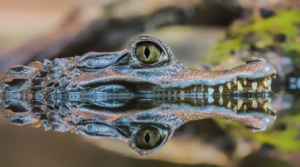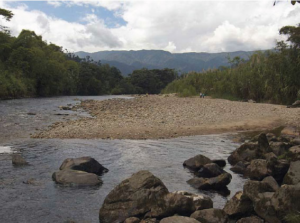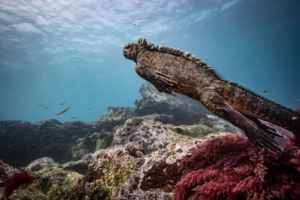Galapagos sea lions, renowned for their captivating charm and presence, stand as one of the most beloved and iconic species inhabiting the Galapagos Islands. Nestled within the vast expanse of the Pacific Ocean and under the jurisdiction of Ecuador, these islands are home to about 50,000 sea lions, making them the most common marine mammal in the archipelago. They are seen all around the islands, and their playful demeanour and charismatic allure make them a prime attraction for the multitude of tourists that visit the Galapagos. Nicknamed dogs of the sea, sea lions portray characteristics that are not too dissimilar from our four-legged friends. They are often seen basking in the sun, whether that be on beaches or benches, or swimming around unsuspecting snorkelers.
Origins and Exclusive Status
Galapagos sea lions are one of six species of sea lion and are part of the eared seal family, having external ear pinnae. Scientifically classified as Zalophus wollebaeki, they are an endemic subspecies exclusively found within the Galapagos Islands. While they share close kinship with their California sea lion counterparts, these creatures possess distinctive characteristics that set them apart.
Unique Physical Features
Galapagos sea lions boast an agile and streamlined physique, perfectly suited for seamless navigation through the depths of the ocean. When young, there is little difference to tell male from female sea lions. However, as they mature into adults, males can be substantially bigger – 2-4 times bigger! Adult males can attain lengths of approximately 2.5 metres and tip the scales at around 250 kilograms, while their female counterparts exhibit smaller proportions, weighing around 100 kilograms. Their fur captivates with its enthralling hues. More specifically, males boast a dark brown coat, a striking contrast to the lighter, yellowish or light brown tones seen in females and juveniles. Males also develop a prominent raised forehead called the sagittal crest by about 10 years of age, further enhancing their already commanding presence. The difference in size, colour, and weight between males and females is called sexual dimorphism.

Foto: Galapagos Safari Capm
Colony Living
These social animals gather in colonies across various islands within the archipelago, frequently opting to rest and bask in the sun on rocky beaches. These congregations often number in the hundreds, showcasing the importance of community to these remarkable creatures. There are two types of sea lion colonies: harem and bachelor colonies. Females live in harem colonies, which are sometimes controlled by one dominant male. However, most males tend to hold territories on beaches where females live, as opposed to holding direct harems. The more dominant the male is, the more land he has in his territory, and therefore the more females are available for mating. Males aggressively defend these territories from other male rivals or interlopers. The ones that don’t manage to acquire a territory containing females tend to form bachelor colonies away from the females.
Mating Season and Pup Development
The mating season of sea lions usually occurs between July and December but can differ from island to island. Sea lions live on the Galapagos islands all year round but if you are particularly interested in seeing sea lion pups, the best time to visit is between July and November. When females give birth, a single pup is born. They spend their first week bonding closely with their mum, developing a unique call to distinguish themselves from other pups of the nursery group. The mother then hunts for food by day, and the pup suckles milk in the evenings. Pups are dependent on their mothers for the first year of their life, although they do also learn to hunt and feed before then. Female pups are more independent than their male counterparts, venturing out to sea and diving for their food much more frequently.
A Dexterity in the Deep and on Shore
Galapagos sea lions reveal their prowess as excellent swimmers, diving into the depths in search of sustenance. They have powerful front flippers used for swimming, reaching speeds of up to 24 mph (40 kph). These features make them efficient hunters, especially of sardines, squid and crustaceans, which are their main prey. These magnificent creatures seamlessly navigate the marine world, an impressive display of their adaptability. In addition, the sea lion’s rear flippers can be rotated under its body to walk very efficiently on land. In fact, this may be hard to imagine, but they can actually move faster on land than most humans for short distances!
An Oceanic Embrace
The playful and curious nature of Galapagos sea lions creates opportunities for unforgettable interactions. Divers and swimmers exploring the islands have the privilege of swimming alongside these captivating creatures, witnessing their vibrant existence in their natural habitat. Engaging with these magnificent beings offers a truly unique and exhilarating experience.
It is crucial to remember that Galapagos sea lions are wild animals deserving of respect and caution. Visitors should maintain a safe distance and adhere to established guidelines for responsible interaction with marine life. By approaching these creatures with care, we preserve their safety and maintain the delicate balance of their natural habitat.

Foto: Santa Cruz II Galapagos Cruise




